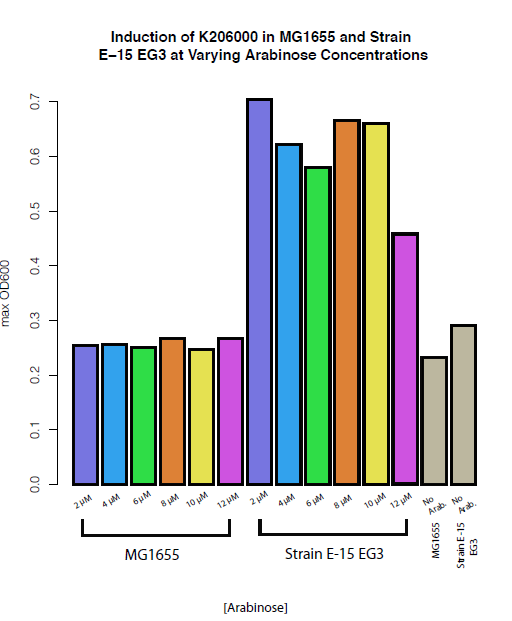Data
The accumulation of plastic products poses a hazard to the environment, as well as humans, through drinking water contamination. This threat led us to develop a degradation pathway to turn the polyethylene terephthalate into different substrates. We produce terephthalic acid and ethylene glycol. Ethylene glycol is a moderately toxic substance, which is oxidized to glycolic acid. The glycolic acid is further oxidized to oxalic acid – a toxic substance that affects the central nervous system via the liver. However, in the environment, the ethylene glycol will be degraded by hydroxyl radicals and in sewage sludge, it is readily biodegradable. Because ethylene glycol must be ingested to pose a problem, researchers take extra precaution to make sure there are no splashes of ethylene glycol in the laboratory and the wastes will be disposed of in the appropriate hazardous waste receptacles. Ethylene glycol can also be a mild irritant if it comes in contact with the skin or if it is inhaled, so researchers wear eye protection as well as gloves and lab coats, and always work with ethylene glycol in the confine of a fume hood. Also, in our constructs, we have produced enzymes that will degrade ethylene glycol into glycoaldehyde and then glycolate. The glycolate has the potential to be turned in to oxaloacetate, a metabolic intermediate. In the environment, ethylene glycol can potentially be toxic within waterways, however the team made sure to dispose of ethylene glycol in a responsible way.
Toxicity of EG Graph for MG1655 and DH5a
We observed that EG is non-toxic to both DH5a and MG1655 cells, as evident from the growth of the two strains. Both strains were exposed to LB media containing varying amounts of EG, ranging from 0 mM to 150 mM.


Spain in EG Graph
Knowing that Strain E-15 EG3 utilizes ethylene glycol, we devised an experiment to test the optimal amount of ethylene glycol the strain would thrive in. From the graph, we deduced that 30 mM of ethylene glycol showed the highest growth rate, which also matched previous data provided in the referenced paper [1].


The point of this Tecan experiment was to see the optimal amount of arabinose in the different strains. In MG1655, it seems that all concentrations of arabinose give about the same maximum OD as the control with no arabinose. Strain E-15 EG3 shows a higher deviation in growth for 2 µM, relative to the 8 µM and 10 µM samples. However, all amounts of arabinose had a significant increase in OD due to the arabinose induction, compared to the no arabinose control. From our data, we see that the 2 µM, 8 µM, and 10 µM are the top three concentrations of arabinose in terms of the maximum OD. The K206000 data page shows that 10 µM has the maximum induction with arabinose, similar to our data observed from this experiment. These two sources demonstrated that 10 µM of arabinose had high induction, leading us to use that concentration in following experiments. The parts registry’s data page did not show optimal induction for 2 µM, but it had the highest maximum OD in our experiment, which is why we included it in our subsequent experiments too.



 "
"












